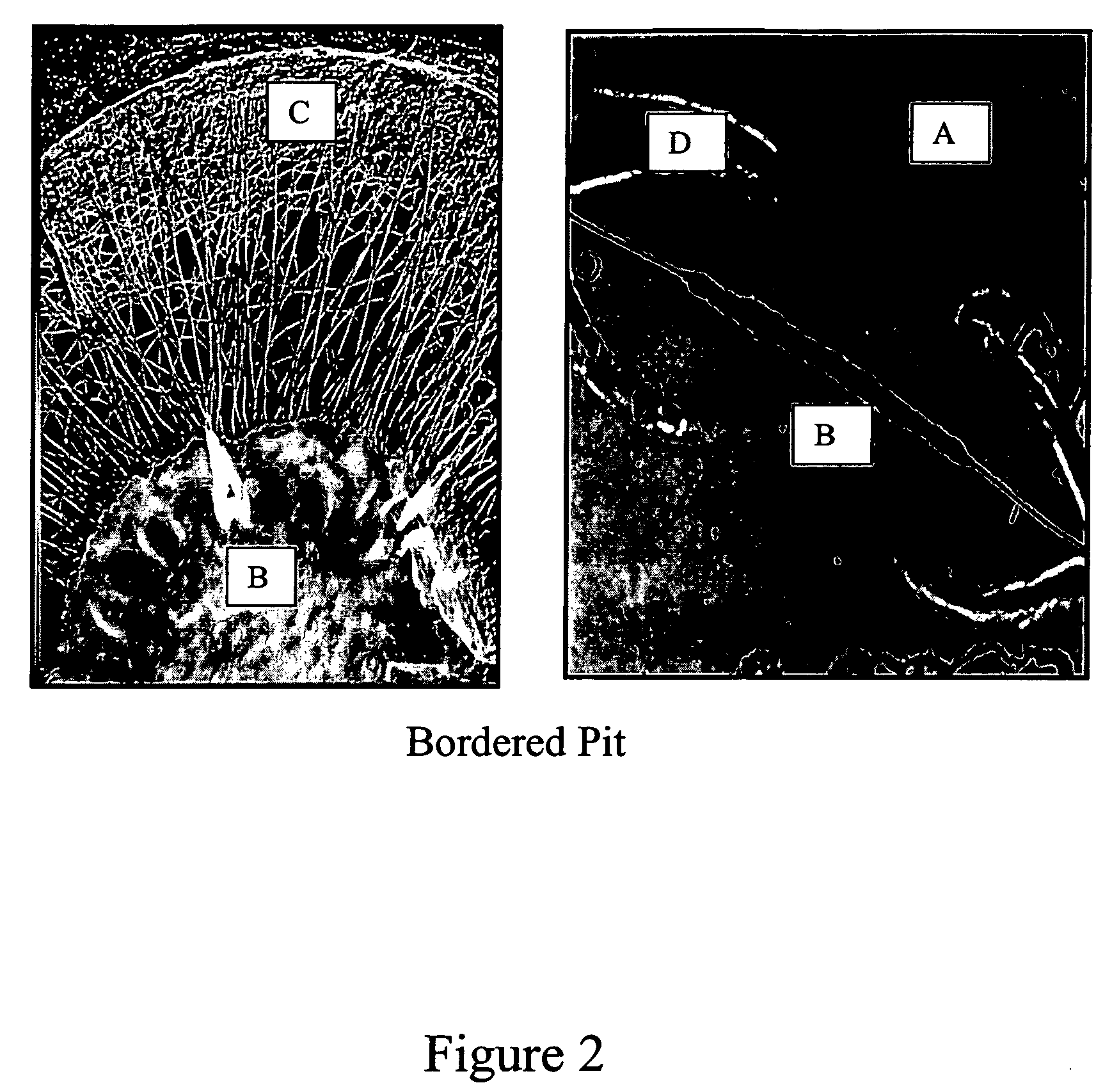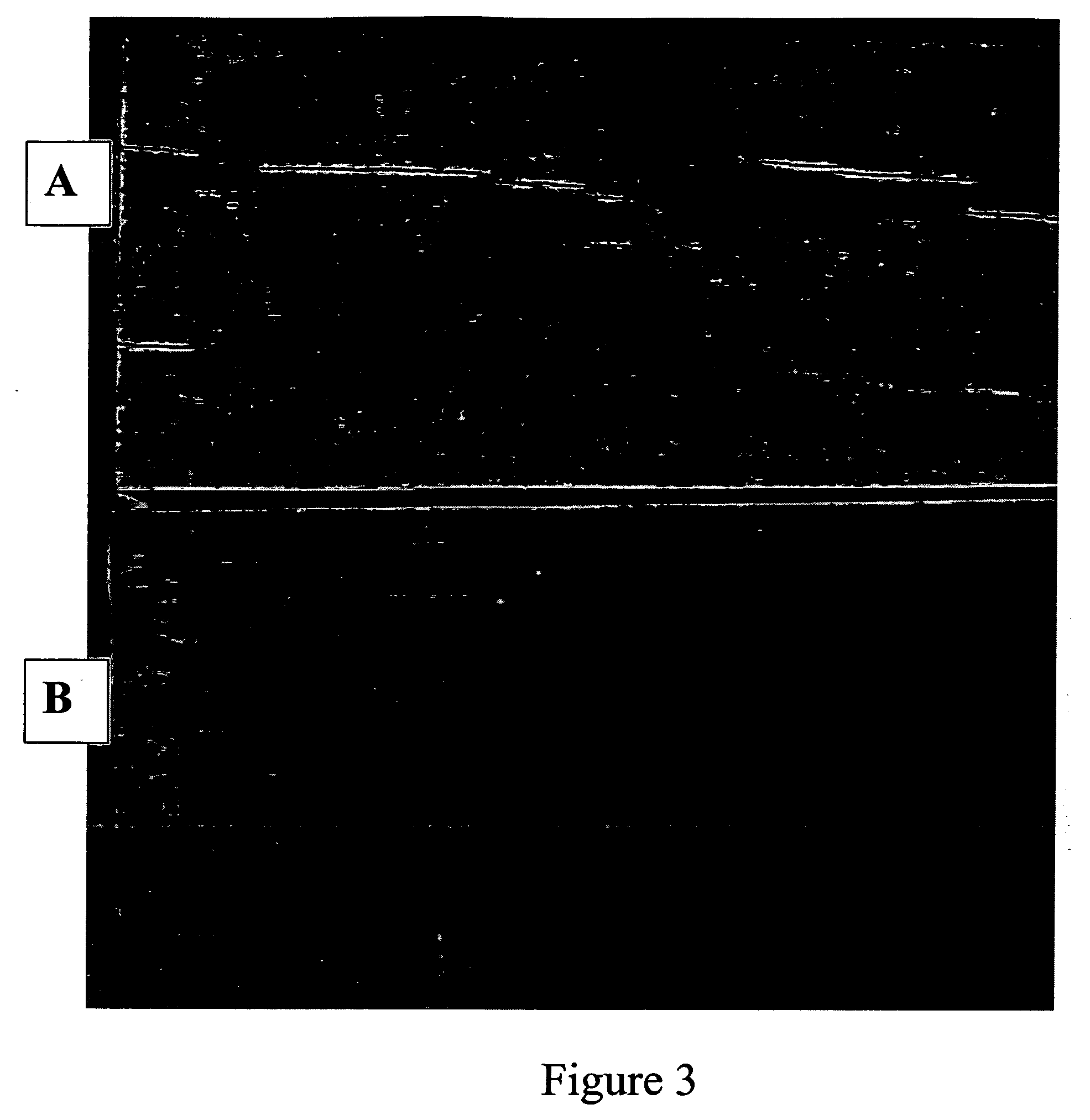Composition and process for coloring and preserving wood
a technology applied in the field of coloring and preserving wood, can solve the problems of untreated wood, subject to bio-deterioration, yellowing, fading, graying, etc., and achieve the effect of preserving wood from biological degradation
- Summary
- Abstract
- Description
- Claims
- Application Information
AI Technical Summary
Benefits of technology
Problems solved by technology
Method used
Image
Examples
example 1
[0161] Six hundred grams of red iron oxide, 400 g yellow iron oxide and 10 g carbon black were added to a container containing 2850.0 g of water and 150 g of a commercially available dispersant. The mixture was mechanically stirred for about 20 minutes and then added to a grinding mill. The sample was ground for about 1 hour and a stable dispersion was obtained. The particle size of the dispersed product was analyzed by Horiba LA-910 Particle Size Distribution Analyzer (PSDA). The average particle size was 0.21 microns with a distribution range of 0.04 um to 1.5 um.
example 2
[0162] Seven hundred grams of red iron oxide, 200 g yellow iron oxide and 5 g black iron oxide were added to a container containing 2050 g of water and 180 g of a commercially available dispersant. The mixture was mechanically stirred for about 20 minutes and then added to a grinding mill. The sample was ground for about 1 hour and a stable dispersion was obtained. The particle size of the dispersed product was analyzed by Horiba LA-910 Particle Size Distribution Analyzer (PSDA). The average particle size was 0.25 microns with a distribution range of 0.005 um to 2.0 um.
example 3
[0163] Eight hundred and ninety grams of yellow iron oxide, 110 g red iron oxide were added to a container containing 3000 g of water and 200 g of a commercially available dispersant. The mixture was mechanically stirred for about 20 minutes and then added to a grinding mill. The sample was ground for about 1 hour and a stable dispersion was obtained. The particle size of the dispersed product was analyzed by Horiba LA-910 Particle Size Distribution Analyzer (PSDA). The average particle size was 0.24 microns with a distribution range of 0.005 um to 2.0 um.
PUM
| Property | Measurement | Unit |
|---|---|---|
| weight percent | aaaaa | aaaaa |
| particle size | aaaaa | aaaaa |
| particle size | aaaaa | aaaaa |
Abstract
Description
Claims
Application Information
 Login to View More
Login to View More - R&D
- Intellectual Property
- Life Sciences
- Materials
- Tech Scout
- Unparalleled Data Quality
- Higher Quality Content
- 60% Fewer Hallucinations
Browse by: Latest US Patents, China's latest patents, Technical Efficacy Thesaurus, Application Domain, Technology Topic, Popular Technical Reports.
© 2025 PatSnap. All rights reserved.Legal|Privacy policy|Modern Slavery Act Transparency Statement|Sitemap|About US| Contact US: help@patsnap.com



